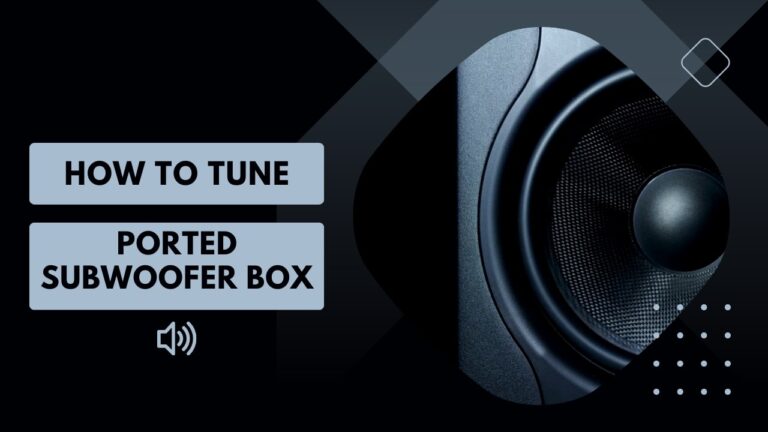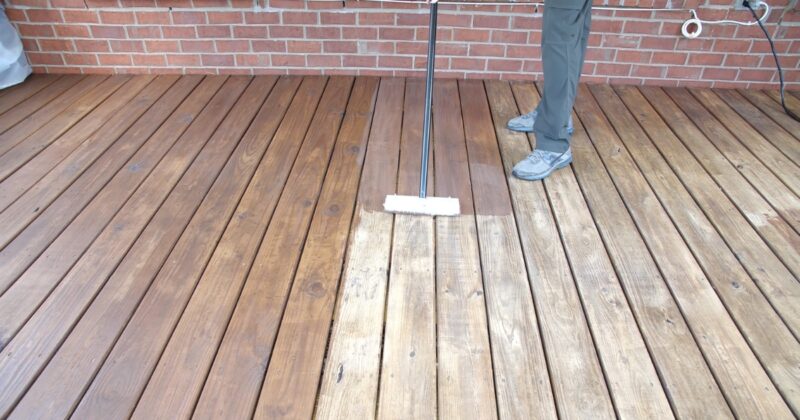Subwoofers have become an integral part of modern audio systems, providing the deep bass that completes the audio experience. However, to get the most out of your subwoofer, especially a ported one, it’s essential to tune it correctly. This article will guide you through the process of tuning a ported subwoofer box, ensuring optimal performance and sound quality.
As you explore ways to fine-tune the resonance of your ported subwoofer box for optimal audio performance, keep in mind the immersive experience that comes from pairing it with powerful computer speakers, creating a harmonious balance between precision and depth in your sound setup.
Before starting the tuning process, it’s essential to understand why tuning is crucial. Tuning a ported subwoofer is vital to its performance. The primary goal is to match the resonance frequency of the box with the subwoofer’s natural frequency. This ensures that the subwoofer and the box work in harmony, producing clear and deep bass.
Tools You’ll Need
- High-end multimeter or ammeter
- Frequency generator
- Speaker cables
- A variety of tools, including wire strippers and screwdrivers
Step-by-Step Guide to Tuning
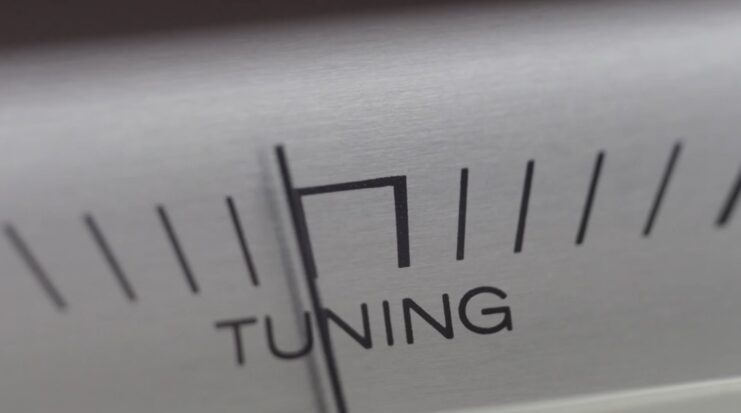
- Decoupling the Subwoofer: Decoupling is the act of separating the subwoofer from the ground to prevent any rattling noises or disturbances during the tuning process. Use an isolation pad under the subwoofer to achieve this. These pads absorb vibrations, ensuring a clearer sound.
- Determining the Resonant Frequency: Connect your ammeter to the amplifier and the inputs of the amplifier to the signal generator. As you vary the frequency of the signal, watch the ammeter. The highest current indicates the resonance frequency of the box.
- Adjusting the Resonant Frequency: If the determined frequency isn’t to your liking, you’ll need to modify your box design. This modification primarily involves adjusting the length of your port. When making adjustments, consider the following parameters:
-
- Fb: The desired tuning frequency in Hertz.
- Lv: The port length in inches.
- R: The inside radius of the vent tube.
- Vb: The internal volume of the enclosure in cubic inches.
By understanding these parameters, you can make informed decisions about how to adjust your subwoofer box for optimal performance.
Additional Tips and Insights
- Tuning Frequency for a Subwoofer Box: The tuning can change the sound quality by altering the peak frequency. For a mix of SPL (Sound Pressure Level) and sound quality, frequencies below 40 Hz are recommended.
- Sealed Subwoofer Box Tuning: For sealed boxes, the resonance frequency will read higher on the meter. Adjust the port length accordingly.
- Loudest Subwoofer Box Design: For the best bass tone, opt for a large subwoofer in a sealed box. An example is the JBL CS1204B, suitable for both cars and homes.
- Why Tune a Subwoofer Box: Tuning maximizes the potential of your sound system. Professional-grade equipment can reproduce frequencies within 20-80 Hz, but car subwoofers can range from 20 Hz to 200Hz.
- Difference Between Subwoofers and Speakers: Subwoofers and speakers serve different purposes. While they might seem similar, subwoofers are designed to reproduce low-frequency sounds, whereas speakers handle a broader range of frequencies.
Common Troubleshooting Issues and Solutions
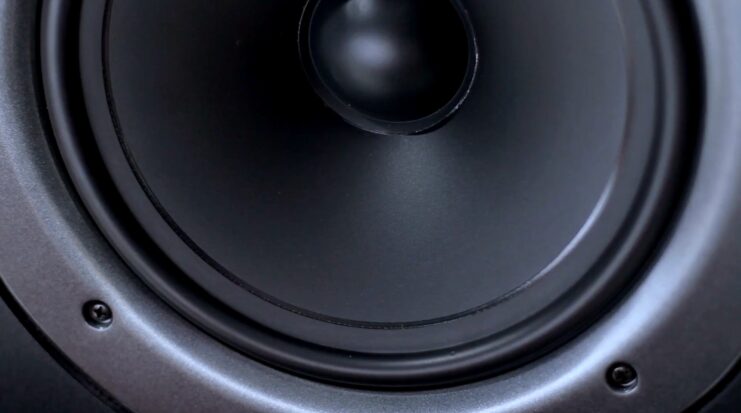
When working with ported subwoofer boxes, users might encounter various issues that can affect the sound quality and performance. Here are some common problems and their solutions:
Distorted or Muffled Sound
- Issue: The bass sounds distorted, muffled, or lacks clarity.
- Solution: Ensure that the subwoofer is correctly positioned. Also, check for any obstructions or debris inside the port, which can affect airflow and sound quality.
Rattling or Vibrating Noises
- Issue: Unwanted noises emanate from the box, especially at high volumes.
- Solution: Inspect the box for any loose components or screws. Ensure that the subwoofer is securely mounted and that the port isn’t vibrating against any internal components.
Reduced Bass Output
- Issue: The bass output is lower than expected or sounds weak.
- Solution: Check the tuning of the box. If the port’s length or diameter is not optimal, it can affect the bass output. Adjusting the port dimensions might help. Additionally, ensure that the subwoofer’s settings, like the low-pass filter, are correctly set.
Port Noise or “Chuffing”
- Issue: A noticeable wind noise or “chuffing” sound comes from the port during bass-heavy tracks.
- Solution: This issue often arises from a port that’s too small in diameter. Consider redesigning the port to be larger or using a flared port design to minimize turbulence.
Overheating Subwoofer
- Issue: The subwoofer gets excessively hot during operation.
- Solution: Ensure that the subwoofer is receiving the correct amount of power and not being overdriven. Overheating can also result from inadequate ventilation. Ensure that the box has enough space around it for airflow.
Intermittent Sound or No Sound
- Issue: The subwoofer occasionally cuts out or doesn’t produce sound at all.
- Solution: Check all connections, including the speaker wires and input cables. Ensure that the amplifier is functioning correctly and that there are no issues with the source device.
Frequently Asked Questions (FAQs)
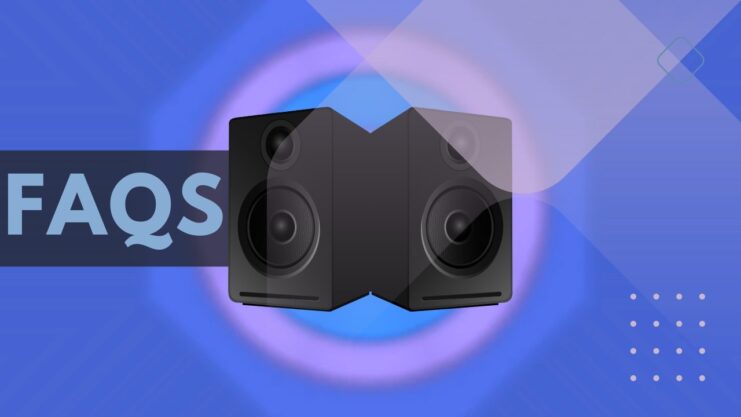
1. What is the primary purpose of tuning a ported subwoofer box?
The main goal of tuning a ported subwoofer box is to optimize its performance by ensuring that the resonance frequency of the box aligns with the subwoofer’s natural frequency. Proper tuning results in clearer, deeper bass and overall improved sound quality.
2. How do the length and diameter of the port affect the sound of the subwoofer?
The length and diameter of the port play a crucial role in determining the box’s tuning frequency. Adjusting the port’s length can change the resonance frequency, while its diameter can influence the amount of air that moves in and out, affecting the bass’s clarity and depth.
3. Why might I hear a “chuffing” or wind noise from my ported subwoofer box?
“Chuffing” or wind noise typically arises from turbulence caused by air moving rapidly through a port that’s too small in diameter. This can be resolved by increasing the port’s size or using a flared port design to minimize turbulence.
4. Can I tune a ported subwoofer box to any desired frequency?
While it’s technically possible to tune a ported subwoofer box to various frequencies, it’s essential to ensure that the chosen frequency complements the subwoofer’s natural frequency and the type of music or sound you primarily listen to. Some frequencies might offer deeper bass, while others might provide more clarity.
5. What’s the difference between a sealed and ported subwoofer box in terms of tuning?
A sealed subwoofer box is an airtight enclosure, and its tuning primarily depends on the box’s volume and the subwoofer’s characteristics. A ported subwoofer box, on the other hand, uses a vent (or port) to enhance the box’s efficiency at low frequencies, and its tuning is influenced by the port’s dimensions and the box’s internal volume.
6. Do I need professional equipment to tune my ported subwoofer box?
While professional equipment can provide more accurate results, basic tools like a multimeter, frequency generator, and some patience can help you achieve satisfactory tuning for most home or car audio setups.
Conclusion
While ported subwoofer boxes offer excellent bass response, they can present challenges. By being aware of common issues and their solutions, users can ensure optimal performance and longevity for their audio equipment.
Related Posts:
- Best Operating Systems for Tablets 2024 - Ultimate…
- Top 11 Best Computer Speakers With Subwoofer 2024 -…
- The Resurgence of Vintage 90s Shirts: How to Style…
- How To Install A Subwoofer To A Factory Stereo - DIY…
- What Is A Good Frequency Response For Speakers - A…
- How To Connect Bluetooth Speaker To PS4? Unlock…

